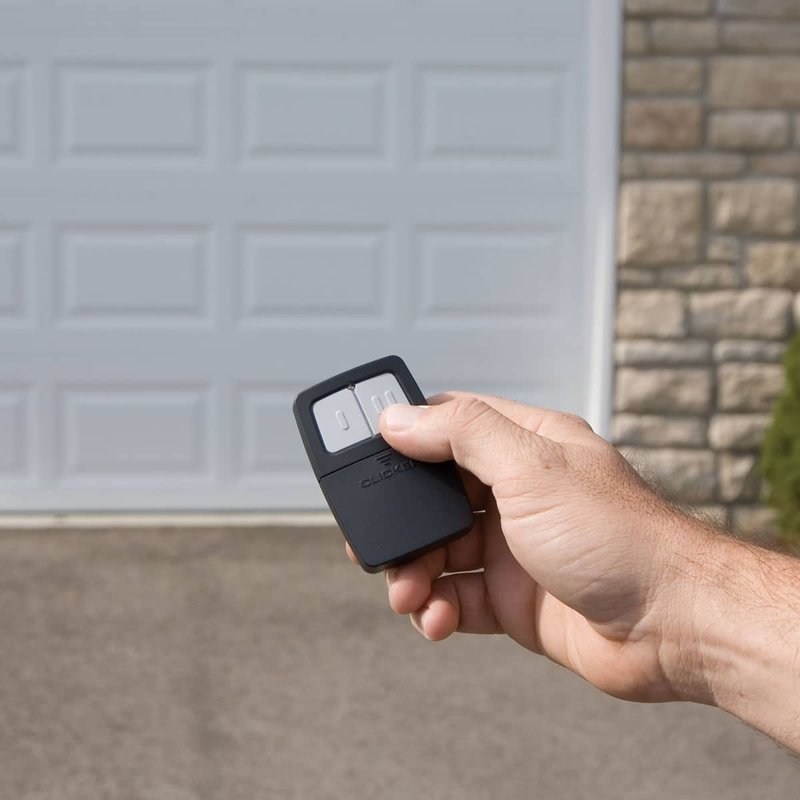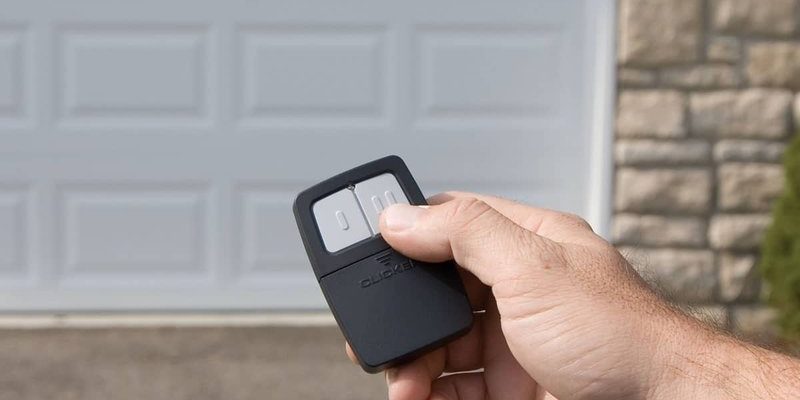
Here’s the thing: Overhead Door’s remotes aren’t exactly the same as the TV remote you grew up with. These little gadgets use a secure code to talk to your opener, and sometimes that connection needs a reset, fresh batteries, or even reprogramming after a power outage. If you’re new to the world of Overhead Door or just came home to find your remote stubbornly silent, you’re in the right place. Let’s roll up our sleeves and sort out the best practices to program, reset, and troubleshoot your Overhead Door garage remote—without any tech wizardry required.
How Overhead Door Garage Remotes Work
Before jumping into programming, it helps to know what’s actually going on inside these little plastic rectangles. Overhead Door remotes, like most garage remotes, use a radio signal to communicate with the opener installed in your garage ceiling. Think of it as a secret handshake between your remote and the opener, except instead of a handshake, it’s a unique code sent over the air.
Every time you press the button on your remote, it sends a specific code—and the opener listens. If the code matches, the opener wakes up and lifts the door. If it doesn’t, nothing happens. Pretty simple, right? But here’s where it gets interesting: most modern Overhead Door remotes use what’s called a “rolling code” system. That means the access code changes every time the remote is used, making it much harder for anyone to “copy” your signal and sneak in.
You might be wondering why the remote ever loses sync with the opener. Sometimes, power outages, changing batteries, or interference from nearby electronics can scramble the code connection. That’s when you need to reprogram or reset your remote. Understanding this system gives you a huge advantage—no more guessing, just clear steps to fix the problem and get your garage door humming again.
Step-By-Step Instructions: Programming Your Overhead Door Remote
Let me explain the most common way to program an Overhead Door garage remote. Don’t worry if you’ve never done this before; these steps work for most Overhead Door remotes (from basic single-button units to multi-button models). If you have a universal remote, the process is similar but may require slightly different codes.
- Find the “Learn” Button: Head to your garage door opener (that big box on the ceiling). Look for a button marked “Learn” or “Program.” It might be on the back or side—usually near a small LED light.
- Press and Release “Learn”: Gently press the “Learn” button. A light will turn on (sometimes it blinks). This tells you the unit is in programming mode. You typically have about 30 seconds until it times out.
- Sync the Remote: With the opener in programming mode, press and hold the button on your remote you want to program. Hold for 2–3 seconds, then release. Some models may require one more press to confirm; check your manual if unsure.
- Test the Connection: Press the remote button again. The garage door should move (open or close). If so, you’re set. If not, repeat the process—sometimes timing is a little finicky.
If you have a remote with multiple buttons, you can repeat these steps for each button to control different doors or functions. Just remember: the programming window is short, so move quickly but don’t panic. When in doubt, start fresh with a power cycle (unplug the opener for a minute, plug it back in) and try again.
Pro tip: If you’re stuck, don’t start pressing every button you see—this can actually clear all codes from your opener and give you more work later.
Troubleshooting Common Overhead Door Remote Issues
So, you’ve followed the steps, but nothing happens. Or maybe the remote works intermittently—like it’s got a mind of its own. Most problems fall into a few easy-to-fix categories.
First, check the battery. It sounds basic, but a weak battery is the
Next, consider signal interference. Electronics like LED bulbs, wireless routers, or even some car electronics can mess with the remote signal. If the remote works only up close, try moving those gadgets—or replace the opener’s light bulbs with garage-door-friendly types.
Sometimes, the system just needs a reset. This clears out any old codes that may be jamming up the connection. Most Overhead Door openers have a way to erase all remote codes—press and hold the “Learn” button (usually for about 10 seconds) until the light blinks or turns off. This wipes the opener’s memory, so you’ll have to reprogram each remote from scratch, but it often fixes persistent problems.
If none of these work, check the remote for visible damage (cracked case, stuck button) or consider that the opener itself may need servicing. Don’t be afraid to call a pro if things get too complicated—sometimes, an old opener just needs a tune-up.
Comparing Overhead Door Brand Remotes With Universal Garage Remotes
You might be tempted to grab any remote off the hardware store shelf, but not all remotes are created equal. Overhead Door brand remotes are made to work seamlessly with Overhead Door openers, using the correct rolling code technology and compatible sync methods. This usually means easier setup and less chance of weird compatibility headaches.
Universal garage remotes, on the other hand, are meant to work with a wide range of brands and opener models. They’re a solid choice if you have different opener brands at home, or if you’ve lost the original remote. But here’s the catch: programming a universal remote often means a bit more fiddling with codes, dip switches, or toggling programming modes. Some universal remotes may not support all Overhead Door openers, especially older or very new models.
If you already have an Overhead Door opener and want the least hassle, stick with the brand’s remote—it’s usually a plug-and-play affair. But if you’re juggling multiple systems, or need a backup, just double-check compatibility on the packaging or the manufacturer’s site.
My take: Universal remotes save space on your keychain, but nothing beats the rock-solid performance and predictable syncing of a genuine Overhead Door remote.
Resetting Your Overhead Door Remote: When and How?
Sometimes, you’ve just got to start over. Resetting your Overhead Door garage remote can solve stubborn issues—like when the remote stops working after a power surge, or you’re worried about lost or stolen remotes.
To reset, you’re mostly wiping the opener’s memory of all paired remotes, so nothing (old or new) can operate it until reprogrammed. This is perfect for giving your system a fresh start, especially after moving into a new house or after an attempted break-in.
- Locate the “Learn” Button as before. Hold it down for 10–15 seconds (you’ll see the LED blink or go out).
- Release the button—the opener’s memory is now clear. No remotes will work until you reprogram them.
- Reprogram each remote one by one, following the regular programming steps. You can’t skip this, or your remotes won’t function.
Keep in mind: Resetting isn’t something you do lightly. Only do it if you’ve lost a remote, have ongoing syncing issues, or you want to clear all users for security reasons. Otherwise, try simple re-syncing or battery swaps first.
Changing Batteries and Maintaining Your Overhead Door Remote
A remote that doesn’t wake the door on the first click could just be tired. Garage remotes are like any other device—they need a fresh battery to keep the signal strong.
Changing the battery is usually straightforward:
- Slide open the battery compartment (some have a screw—others pop open with a coin).
- Note the battery type (commonly CR2032 or similar). Install the new battery with the correct polarity.
- Close the compartment and test the remote. If it still doesn’t work, try reprogramming it as described above.
Don’t forget to check the battery contacts; if they’re dirty or corroded, give them a gentle clean with a soft eraser or a bit of rubbing alcohol on a swab. This ensures a solid electrical connection and keeps your remote responding quickly.
Small maintenance steps like this go a long way. Treat your remote gently—don’t drop it or leave it in extreme heat (like on your car dashboard in summer). A little attention can keep your Overhead Door remote working for years.
Programming Multiple Overhead Door Remotes and Keypads
Got more than one remote, or maybe a keypad for family or guests? Programming additional units is just like programming the main remote—you’re syncing each one to the same opener.
- Put the opener in “Learn” mode as before.
- Press the button on the new remote or enter your code on the wireless keypad.
- Repeat for each device, making sure you complete the process within the programming window.
Each opener can support multiple remotes and keypads, though there’s usually a limit (often 5–7). If you hit that limit, you may need to clear the system memory (full reset) and start over. If you ever sell a remote or move out, don’t forget to reset the opener to erase any previous codes, keeping things secure for the new owner.
For keypads, most have a “Learn” or “Program” sequence printed inside the battery door. Once paired, you can open the door without a remote—just punch in your code. It’s great for kids or guests who don’t have a clicker.
Keeping Your Garage Door System Secure
Garage door remotes aren’t just a convenience—they’re a key to your home. Treat them with the same respect you’d give your house keys. If you lose a remote or suspect someone else has access, reset the opener immediately and reprogram only the remotes you trust.
It’s also smart to avoid leaving remotes visible in your car, especially if it’s parked outside. Thieves know that a remote plus the address from your registration is an invitation into your garage—and maybe your home.
Upgrading to an opener with rolling code technology, like most new Overhead Door models, adds an extra layer of security. If your system is really old, you might consider an upgrade just for peace of mind.
Here’s a thought: Treat your garage opener remote like a front door key—and you’ll never regret it.
Programming an Overhead Door garage remote doesn’t have to be an exercise in frustration. Once you understand how the syncing, code, and reset features work, it’s less like cracking a safe and more like setting up a favorite playlist: a bit of setup, and then everything just works. Keep batteries fresh, be mindful of security, and don’t hesitate to reprogram or reset when things get weird. That way, you’ll always have a smooth, reliable exit and entry—and one less headache in your daily routine.
